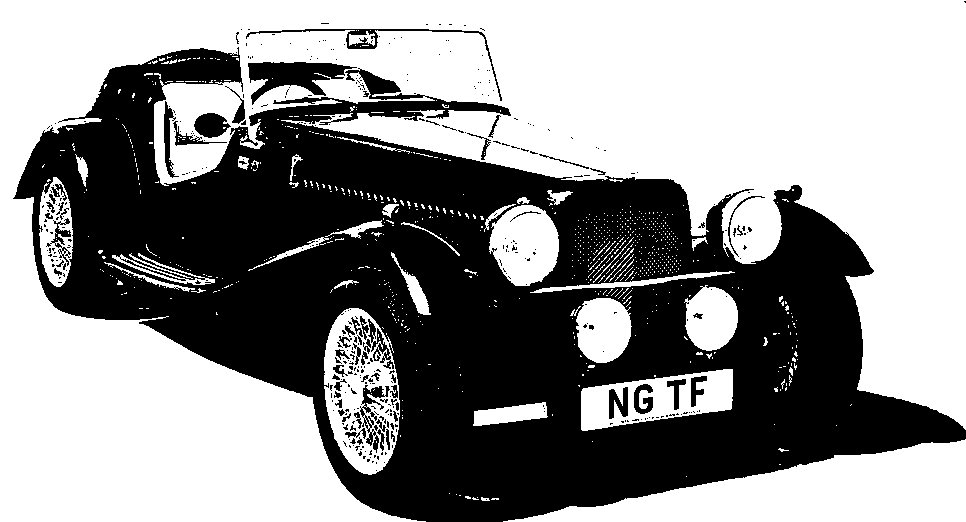
NG Kit Car
Wind Deflectors
June - August 2006 (Addition)
Wind-in-the-hair is part and parcel of the glorious NG experience but wind in the face (or eyes) can be a problem. It is lovely on a warm summer’s day to travel without the side screens but it becomes difficult to drive above about 50mph and still see where you are going!
There seemed to be different opinions among other owners as to the effectiveness of windscreen deflectors so I resolved to experiment a little with the best size and shape. My idea was to make perhaps several different size/shape combinations from relatively cheap acrylic and then to make proper ones in polycarbonate (rather more robust than acrylic and less prone to shattering). Some owners use the same fixings as those for the side screen but I did not want to have to remove the deflectors every time and store them. This solution therefore allows the side screens to be attached and removed with the deflectors in place.
The first stage was to obtain four chrome ‘Cobra’ style hinges (photo 2) and I found these on a visit to Stoneleigh (National Kit Car Show). They each consist of a block and bracket connected with a machine screw and nut which may be tightened to stiffen the assembly. The block has a countersunk, drilled hole which is used to fix to the NG windscreen side frame using longer replacement screws. The bracket part has two holes which are used to fix to the ‘glass’ with suitable stainless screws & nuts. I also made small plates for the opposite side of the glass to spread the load. The off-cuts from the stainless steel side screen hinges proved ideal for these.
After examining several other manifestations of wind deflectors, I worked out a compromise which would give a reasonable area of protection and still look aesthetically pleasing.
A sheet of 4 mm clear acrylic from B&Q provided plenty of practice and opportunity for trial and error although in the end it was not needed. Marking out is quite easy with an OHP pen as the sheet is supplied with a plastic peel off surface. A jigsaw with a fine hacksaw type blade makes easy work of cutting out the shape but I discovered that it works much better if you have an oscillating type jigsaw as otherwise you run the risk of overheating and melting the acrylic instead of cutting it. It is also a good idea to use masking tape along either side of the cut line to save the foot of the saw scratching the sheet. A radius was formed on each of the corners for safety and looks (photo 3).
The first attempt worked very well both practically and aesthetically. Just a little more clearance was needed to the side mirror’s fixing. A second sheet was cut and this time it felt spot on. I could comfortably drive at least 10-20 mph faster and have no difficulty seeing where I was going.
Now I was happy with the measurements (photo 4), I purchased an A3 sheet of 6mm polycarbonate from Davis Industrial Plastics (from their ebay shop) which is enough for 3 wind deflectors so I have enough for a spare if I ever need it. This material is similar to acrylic to work with (though somewhat harder) and the practice working with acrylic was therefore worthwhile. Careful filing and sanding with progressively fine wet & dry on the edges produced a ‘glass like’ finish and a small chamfer was added around the perimeter to remove any sharpness.

fitted



fitted
Click this icon for a PDF version of the Wind Deflectors which you are free to download.